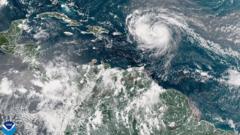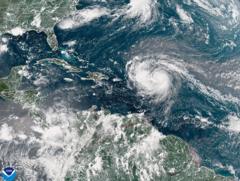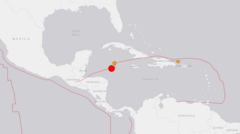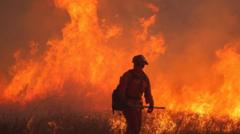SAN JUAN, Puerto Rico (AP) — Not a single named storm has formed in the Atlantic Ocean in nearly three weeks, even though it’s the peak of hurricane season. 'Where the heck are the Atlantic #hurricanes?' Philip Klotzbach, a meteorologist at Colorado State University, wondered on social media. The last named storm to emerge this season, Tropical Storm Fernand, formed on August 23 and quickly dissipated by August 28, leaving experts confused about the lack of activity. Data highlights that this is only the second occurrence of no named storms during the peak of hurricane season since 1950, as noted by Ernesto Rodríguez, a meteorologist at the National Weather Service in San Juan. Typically, conditions during this period are conducive to storm formation; however, unusual variables such as strong vertical wind shear, stable dry air, and decreased rainfall from West Africa are at play. Rodríguez notes that while the current calm is beneficial for regions still recovering from Hurricane Maria in 2017, forecasts suggest the potential for a busier second half of the season as conditions may shift. Ocean temperatures remain warm, supporting storm development. Historically, a majority of hurricane activity occurs in August and September, with this year showing significantly fewer named storms than expected.
Unusual Silence in Atlantic Hurricane Season

Unusual Silence in Atlantic Hurricane Season
As the Atlantic hurricane season reaches its peak, meteorologists express astonishment at the absence of named storms for nearly three weeks. Factors contributing to this phenomenon include strong wind shear and dry air over the region.
Puerto Rico and other regions are currently experiencing an unusually quiet Atlantic hurricane season, with no named storms recorded for almost three weeks at its peak. Meteorologists attribute this lack of activity to strong wind shear, persistent dry air in the Atlantic, and a fall in rainfall in West Africa. Although this calm is seen as favorable for areas still recovering from previous hurricanes, experts warn that the season could still ramp up later in September and October, especially given warm ocean temperatures that fuel storm development.


















